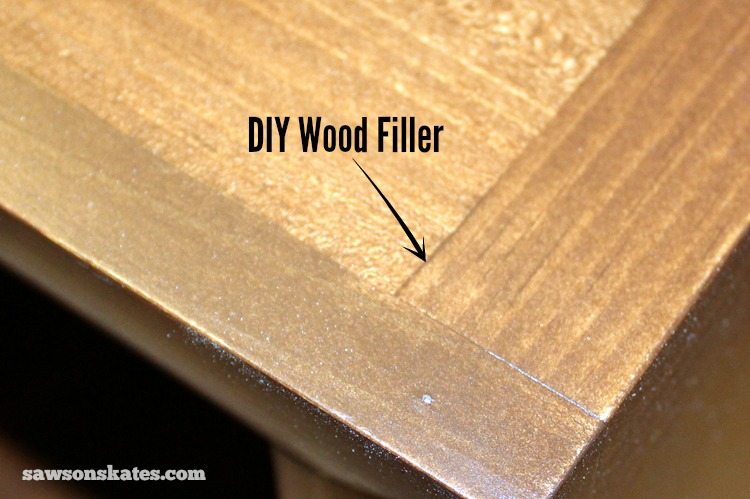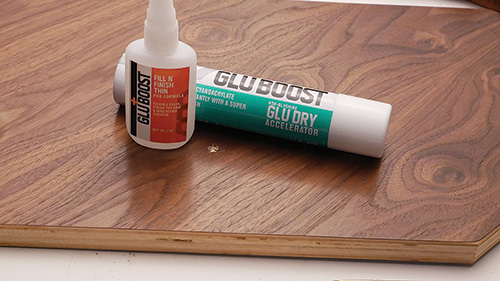So, you’re wondering if it’s possible to stain wood glue and sawdust? Well, you’ve come to the right place!
Imagine being able to transform your woodworking project into a beautiful, finished piece with just a simple step.
In this article, we’ll explore whether staining wood glue and sawdust is a viable option and how you can achieve stunning results. Let’s dive in!
How to stain wood glue and sawdust:
- Mix wood glue and sawdust until a paste forms.
- Apply the paste to the wood surface using a putty knife. Fill in any gaps or holes.
- Let the glue and sawdust mixture dry completely.
- Sand the surface until smooth.
- Apply your desired wood stain, following the manufacturer’s instructions.
Now you can enjoy a seamless, stained finish on your woodwork!

Can You Stain Wood Glue and Sawdust?
Woodworking projects often involve using wood glue and sawdust to create strong bonds and fill in gaps. However, if you’re looking to stain your project, you may be wondering if the wood glue and sawdust will accept stain in the same way as the surrounding wood. In this article, we will explore whether you can stain wood glue and sawdust, the best techniques to achieve a consistent finish, and some tips and tricks to consider along the way.
Certain Wood Glues Can Be Stained
When it comes to staining wood glue, not all types will accept stain in the same way. Some conventional white and yellow wood glues are not designed to be stained and will resist the color. However, there are specialty wood glues available that are specially formulated to accept stains. These staining glues are typically labeled as “stainable” or “dyable” and are the best option if you want the wood glue to blend seamlessly with the surrounding wood.
When using a staining wood glue, it’s crucial to follow the manufacturer’s instructions and test it on a scrap piece of wood before applying it to your project. This will allow you to see how the glue reacts with the stain and ensure that it produces the desired result. Keep in mind that staining wood glue may require a longer drying time compared to regular wood glues to ensure optimal stain absorption.
In addition to staining wood glue, sawdust can also be used to create wood fillers that can be stained. By mixing sawdust with wood glue, you can create a custom-colored filler that matches the surrounding wood. This allows you to fill in any gaps or imperfections in your project and make them nearly invisible once stained.
The Importance of Proper Surface Preparation
Before attempting to stain wood glue and sawdust, it’s crucial to properly prepare the surface. This involves sanding the entire project, including the glued areas, to create a smooth and even surface. Sanding not only helps the stain adhere more effectively but also ensures that the glue and sawdust mixture is evenly distributed for a seamless finish.
Start by using a coarse-grit sandpaper to remove any excess glue and to level the surface. Then, gradually move to finer grit sandpapers to achieve a smooth finish. Pay extra attention to the areas with wood glue and sawdust, ensuring that they are sanded flush with the surrounding wood. Once the surface is sanded to your satisfaction, remove any dust with a tack cloth or a vacuum to ensure the stain adheres evenly.
By properly preparing the surface, you’ll create the ideal foundation for the stain to penetrate both the wood and the wood glue and sawdust mixture, resulting in a professional-looking finish.
Applying Stain to Wood Glue and Sawdust
When it comes to applying stain to wood glue and sawdust, it’s important to apply it evenly and blend it seamlessly with the surrounding wood. Here are some tips to help you achieve the best results:
- Choose a stain color that closely matches the natural color of the wood. This will help the wood glue and sawdust blend into the background, making any imperfections less noticeable.
- Before applying the stain, stir it thoroughly to ensure an even color consistency.
- Using a clean brush or a lint-free cloth, apply the stain to the surface, ensuring that the wood glue and sawdust areas are evenly coated.
- Allow the stain to penetrate the wood for the recommended amount of time specified by the manufacturer.
- Wipe off any excess stain with a clean cloth, following the direction of the wood grain.
- Allow the stain to dry completely before applying a protective finish such as varnish or polyurethane.
Following these steps will help you achieve a beautiful and consistent finish, where the wood glue and sawdust blend seamlessly with the surrounding wood, creating a cohesive look for your woodworking project.
Considerations and Tips
While staining wood glue and sawdust can produce stunning results, there are a few considerations and tips to keep in mind:
- Always test the stain on a scrap piece of wood or an inconspicuous area of your project to ensure it produces the desired color.
- Some wood species may react differently to stain, so it’s essential to research and understand how your specific wood type will absorb the stain.
- If you’re working on a larger project with multiple glued areas, consider staining the entire surface consistently to achieve a cohesive look.
- Remember that the color of the wood glue and sawdust may vary slightly from the surrounding wood, even when stained. This can create a subtle contrast that adds depth and character to your project.
- Applying multiple coats of stain may deepen the color and help achieve a more even finish.
By considering these factors and applying the proper techniques, you can successfully stain wood glue and sawdust, creating beautiful and professional-looking woodworking projects.
In Summary
Wood glue and sawdust can be stained to blend seamlessly with the surrounding wood. By using staining wood glues and properly preparing the surface through sanding, you can create a smooth and even surface for optimal stain absorption. Applying the stain evenly and following the proper techniques will result in a cohesive and professional-looking finish. Remember to test the stain on a scrap piece of wood and consider the characteristics of your wood species to ensure the desired color. With these tips in mind, you’ll be able to successfully stain wood glue and sawdust, enhancing the beauty of your woodworking projects.
Key Takeaways: Can You Stain Wood Glue and Sawdust?
1. Wood glue and sawdust can be stained to match the color of the surrounding wood.
2. Before staining, make sure the wood glue is fully dry and hardened.
3. Mix wood glue with sawdust of the same wood species to create a filler that blends seamlessly.
4. Apply the mixture to the desired area and let it dry completely before sanding.
5. After sanding, apply the stain evenly to achieve a consistent color across the wood surface.
Frequently Asked Questions
Staining wood glue and sawdust can be a popular technique in woodworking projects. Here are some common questions regarding this process and their answers.
1. How do you prepare wood glue and sawdust for staining?
To prepare wood glue and sawdust for staining, start by ensuring the mixture is thoroughly mixed and dried. This can be done by spreading the mixture on a flat surface or using a mixing container. Once it has dried, sand the surface to smooth out any rough edges or uneven areas. It’s crucial to remove any excess sawdust that didn’t adhere to the glue. This will provide a clean surface for staining.
After sanding, wipe away any dust with a clean cloth or brush. If needed, you can also use a wood conditioner to help the stain evenly penetrate the surface. Once these steps are completed, you’re ready to apply the wood stain to achieve the desired color.
2. Can you achieve a consistent color when staining wood glue and sawdust?
Staining wood glue and sawdust can result in a consistent color if the preparation is done correctly. It’s essential to ensure that the mixture is thoroughly combined and evenly spread before drying. This will help to avoid any variations in the coloration when staining.
Choosing the right type of wood glue can also impact the consistency of the stain. Opt for a glue that dries clear and doesn’t have any additives that could alter the color. Applying a pre-stain wood conditioner can also help in achieving a consistent color by ensuring even absorption of the stain.
3. What type of stain works best for wood glue and sawdust projects?
When it comes to choosing a stain for wood glue and sawdust projects, several options are available. However, it’s generally recommended to use oil-based stain as it tends to penetrate the surface more effectively and provides a rich color. Oil-based stains also tend to have a longer drying time, allowing for better control when applying the stain and achieving the desired hue.
Water-based stains can also be used, but they may not penetrate as deeply into the wood glue and sawdust mixture and may result in a lighter color. It’s best to test the stain on a small, inconspicuous area before applying it to the entire project to ensure that it achieves the desired effect.
4. Can you add additional colors or effects to wood glue and sawdust stains?
Absolutely! You can enhance the look of wood glue and sawdust stains by adding additional colors or effects. One popular technique is to use a gel stain or glaze over the base stain to create depth and texture. This can be achieved by applying the gel stain with a brush or cloth and then wiping away the excess, leaving the stain in the crevices and corners for an aged or antique look.
You can also experiment with different techniques like layering stains or adding highlights and lowlights to create a more customized appearance. It’s always a good idea to practice on a scrap piece of wood before applying the technique to your project to ensure you achieve the desired effect.
5. How do you protect wood glue and sawdust stains?
Protecting wood glue and sawdust stains is an essential step to ensure their longevity. Once the stain has dried and cured, you can apply a clear topcoat or sealer over the surface to protect it from moisture, UV rays, and general wear and tear. Polyurethane is a popular choice for this purpose.
When applying the topcoat, use a brush or applicator pad, following the manufacturer’s instructions. Apply thin, even coats and allow sufficient drying time between each coat. This will help build a protective layer while preserving the beauty of the stained wood glue and sawdust project.

Beginner Wood Filling Mistakes | How to Fill Cracks and Gaps
Summary
So, can you stain wood glue and sawdust? The answer is yes, but it won’t look the same as staining real wood. Mixing wood glue with sawdust can create a wood filler that can be stained, but the results may vary. It’s important to test the stain on a small area first to see how it looks. Remember, it won’t have the same grain and texture as real wood, so manage your expectations.
While staining wood glue and sawdust can be a creative solution for small projects or repairs, it’s not recommended for larger pieces or furniture. It’s best to use real wood for those cases. Now you know that staining wood glue and sawdust is possible, but it has its limitations.
